On geographic maps Bulgaria does not come across as a big country. However, once you open the world heritage map created by UNESCO, you will instantly see that the country's territory is dotted with a few green markers. Seven of them stand for heritage sites under the aegis of the world organization. The celebrated Boyana Church that keeps unique frescos from 1259 has been on the UNESCO list since 1979.
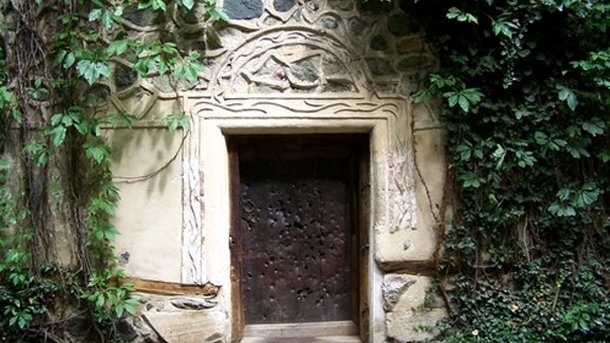
© Photo: archive
The small church stands in the village of Boyana, today a Sofia suburb. The place is indeed special. Many visitors report that it is the focus of a powerful energy that has made them feel calmer and renewed. Entering the church through the door marked by countless bayonet blows, the newcomer is exhilarated by the high quality of the art on the church’s walls. Mariana Hristova-Trifonova, the head of the Boyana Church Subsidiary of the National Museum of History, admits that she is blessed to work for this site. “I and the church have A special relationship. I started work here as soon as I graduated from the university.”
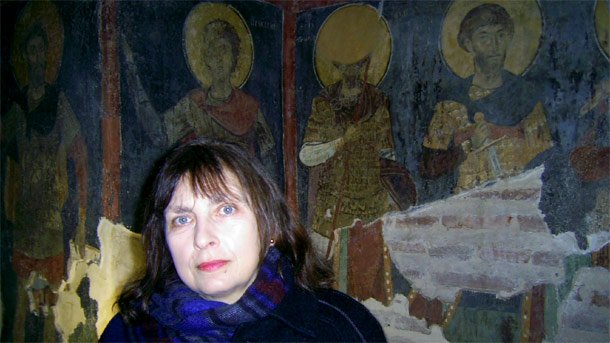
© Photo: Albena Bezovska
“The church means a lot of things to me”, she goes on to say. “I will never forget the excitement that I felt in 1977 when the Boyana Psalm-Book was found in a hollow on the upper floor. Even a daily look at the frescos reveals new details. Every time I feel deep veneration for the works of art here that betray the spectacular talent of their creator who recreated in a most realistic way human figures, animals and objects, at a time when the dogma in art was still very strong. The frescos display exceptional mastery as the unknown artists still managed to stay within the boundaries outlined by the canon. The quality of these works of fine art is universal; it is among the foremost achievements of world art.”

© Photo: archive
The Boyana Church has undergone restoration works on several occasions. In 1912 Joseph Bala, an Austrian restorer was commissioned for the first restoration session by Queen Eleonora, the wife of Bulgarian King Ferdinand. Works for restoration continued over time,. Many renowned Bulgarian artists have joined such works. From end-1976 to 2008 the church was closed for the public.
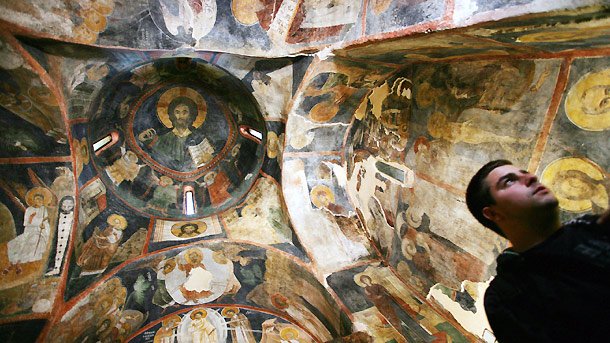
“Interest in the medieval site has become keener over the recent years”, Mrs Hristova continues. “It is curious that visitors in 2011 were by 4000 more on 2010. They are also welcome for more information on our quite user-friendly website. An international conference was held back in 2011 for the 750th anniversary since the painting of the Boyana Church. The volume with the materials from it was released with support from UNESCO. We made twenty videos for the anniversary and translated them into several foreign languages, including Japanese. Interest in the church has become stronger since signatures were found here assumed to be by artists unknown so far: Vassiliy and Dimitar.”
 Many legends are linked to Boyana Church. According to one of them, the anonymous Boyana Master made his own self-portrait. However, both portraits mentioned in legends, are of saints – scholars have proved this long ago. The most popular story however cannot possibly be checked. The locals have believed for centuries that the Boyana Master was in love with Dessislava, the wife of the church donor, Boyar Kaloyan. And indeed, her portrait is amazing with its beauty and the gentle femininity that it radiates.
Many legends are linked to Boyana Church. According to one of them, the anonymous Boyana Master made his own self-portrait. However, both portraits mentioned in legends, are of saints – scholars have proved this long ago. The most popular story however cannot possibly be checked. The locals have believed for centuries that the Boyana Master was in love with Dessislava, the wife of the church donor, Boyar Kaloyan. And indeed, her portrait is amazing with its beauty and the gentle femininity that it radiates. 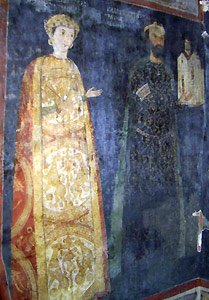
© Photo: Albena Bezovska
“The Boyana Church was discovered for science in 19 c. – the first researcher that visited it and mentioned it in his works was Victor Grigorovic, a Russian scholar who traveled the Balkans in 1844-45. Later other European scholars wrote about it, the Czech Konstantin Jirecek and Serb Stefan Verkovic. The first monograph about the church that explored its frescos, architecture and history was written by Prof. Andrey Grabar. Released in 1924 it is still the basic source for later studies. The church functioned until 1954 when it was declared monument of culture of national relevance. Later, in September 1979, the UNESCO session in Egypt included the site on the list of the world cultural heritage of that organization. The church has to layers of paintings – from 12 c. And from 1259 when the second part of the church was painted. Only few fragments are kept from 14 and 17 c. The restoration works of the frescoes were finalized in 2008. They display more than 240 stunningly realistic figures. They are foreign to any asceticism so typical of the mainstream works of painting at that time. The Boyana Master’s frescos are bustling with life. He has escaped the matrix and offers no repetitions. Any depicted man, woman or saint is presented as a personality, with their own emotion and expression that show clearly in both gestures and glance. For instance, the fresco The Miracle of St. Nickolas in the Sea displays both fear, horror, plea and despair. The donor family Kaloyan and Desislava were definitely painted from life. Apart from the portraits of the King and the Queen, Konstantin-Asen and Irina, they are among the earliest paintings of historical personalities kept in Bulgaria. They are very impressive despite various requirements for posture, clothing etc.”
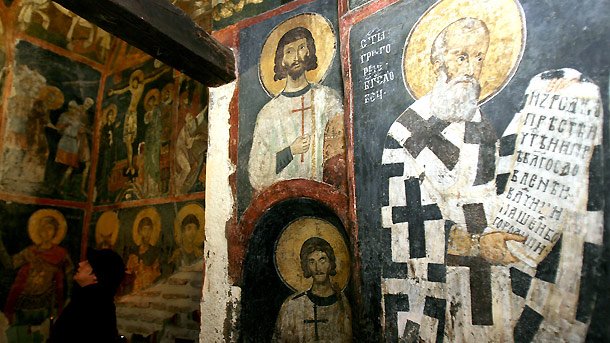
© Photo: BGNES
St. Nicholas is the patron of the lower floor that was used as a village church. The frescos there present 18 scenes from his bio and some have only rarely been recreated in church painting. There are many unique images that are noteworthy. The earliest portrait is of St. Ivan of Rila, the patron saint of Bulgarians. Andrey Grabar argued that the image of Jesus Christ portrayed as a teenager is unique worldwide. The upper floor dedicated to St. Panteleimon, functioned as a family chapel of the local boyars (governors of the Sofia District at that time). During natural disasters in the Middle Ages the roof was damaged massively, and most of the frescos have been lost forever. Today visits to the church are made under a special regime. Groups include up to eighty people and they are allowed inside for not longer than 10 minutes. Long queues are far from rare, but the interiors of the church are worth the time. In the meantime, visitors are welcome to enjoy the lovely churchyard.
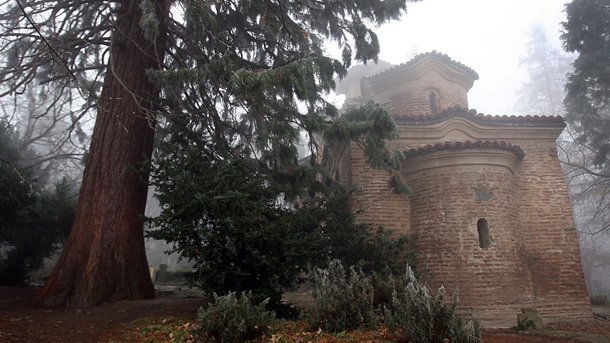
© Photo: BGNES
In 1905 King Ferdinand started a remarkable botanical collection by planting giant redwood trees and other precious species. The park also displays stone candlesticks and marble fragments from earlier buildings. The tomb of Eleonora, Ferdinand’s wife, is also here. The queen loved the place dearly, was aware of the value of the frescoes and did a lot to preserve them. She provided a terrain for a new church and in this way prevented some plans to pull the small church down. The fountain in the churchyard was built by a famous goldsmith from Sofia in 1882 as a donation to the Boyana Church.
Translated by Daniela Konstantinova
Supposedly, the city of Kabyle that thrived in what is now Southeastern Bulgaria, was named after the Thracian Mother of Gods Cybele portrayed on the rocks of the Zaychi Vrah shrine. It was at the foot of this ancient astronomical..
First city, centre – that is the meaning of the name Pliska, which the founders of the First Bulgarian Kingdom gave to their capital in the 7 th century. They selected a location where major trade routes intersected, whereas the..
Samokov lies just 55 kilometers from Sofia and is best known for its proximity to the ski resort of Borovets. The people who have inhabited these parts through the ages have left abundant evidence – for example stone, wood and paper..

+359 2 9336 661
